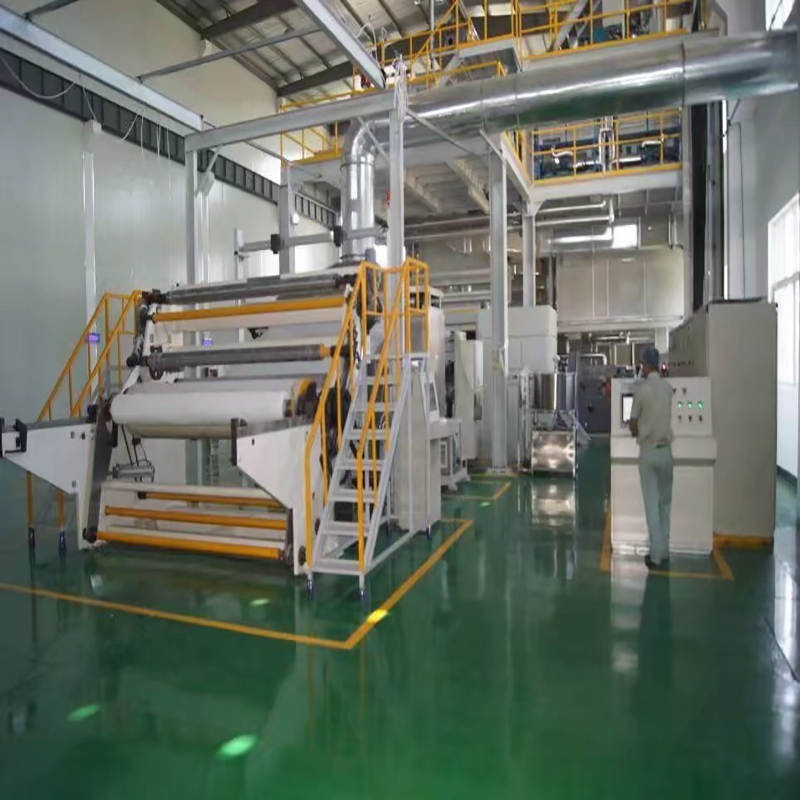In the ever-evolving landscape of the manufacturing industry, innovative technologies and machinery play a pivotal role in driving efficiency, productivity, and quality. One such technology that has gained significant traction is nonwoven machinery. Nonwoven fabrics by производители оборудования для производства нетканых материалов, with their diverse applications in sectors like healthcare, automotive, строительство, and more, have revolutionized the way we perceive textiles.
Understanding Nonwoven Machinery

Nonwoven machinery refers to a range of specialized equipment designed for the production of nonwoven fabrics. Unlike traditional textiles that are formed by weaving or knitting yarns together, nonwoven fabrics are manufactured by bonding or interlocking fibers together using mechanical, химический, or thermal processes. Nonwoven machinery encompasses various stages of the production process, including fiber preparation, формирование сети, web consolidation, and finishing. These machines are equipped with advanced technologies and components to ensure precise control, high-speed production, and consistent quality of nonwoven fabrics.
Key Components and Technologies
Nonwoven machinery comprises several key components and technologies that contribute to the efficient production of nonwoven fabrics. Some essential components include fiber opening and blending systems, чесальные машины, cross-lappers, needle looms, thermal bonding machines, and finishing equipment. Each component performs a specific function in the overall process, such as opening and blending fibers, forming a web, consolidating the web, and applying finishing treatments.
Advanced technologies, such as computerized control systems, automation, and artificial intelligence, have also made their way into nonwoven machinery. These technologies offer improved precision, real-time monitoring, and enhanced operational efficiency, leading to higher productivity and consistent product quality.
Applications of Nonwoven Fabrics
Nonwoven fabrics find applications in a wide range of industries due to their unique properties and versatility. In the healthcare sector, nonwoven fabrics are used for surgical gowns, маски для лица, wound dressings, and disposable medical products. The automotive industry utilizes nonwoven fabrics for interior upholstery, noise insulation, and filtration systems. Construction companies rely on nonwoven fabrics for geotextiles, building insulation, and roofing materials. Nonwoven fabrics also find applications in agriculture, фильтрация, packaging, and hygiene products like diapers and wipes.
The ability to customize nonwoven fabrics by altering fiber composition, density, and bonding methods allows manufacturers to cater to specific industry requirements and create innovative solutions.
Advantages of Nonwoven Machinery
Nonwoven machinery offers several advantages over traditional textile production methods. Firstly, nonwoven fabrics can be manufactured at a high speed, resulting in increased productivity and reduced production costs. The flexibility of nonwoven machinery enables quick product changeovers and customization, allowing manufacturers to respond swiftly to market demands. Кроме того, nonwoven fabrics can be produced in various thicknesses, densities, and textures, providing a wide range of options for different applications.
Nonwoven machinery also promotes sustainability by minimizing material waste. The production process of nonwoven fabrics generates less scrap compared to traditional textiles, and recycled fibers can be incorporated into the manufacturing process, further reducing environmental impact.
Future Trends and Innovations
The nonwoven machinery industry is continually evolving, driven by technological advancements and market demands. Future trends include the integration of smart sensors for real-time process monitoring, the development of eco-friendly and biodegradable nonwoven fabrics, and the exploration of nanotechnology for enhanced functionality and performance.
